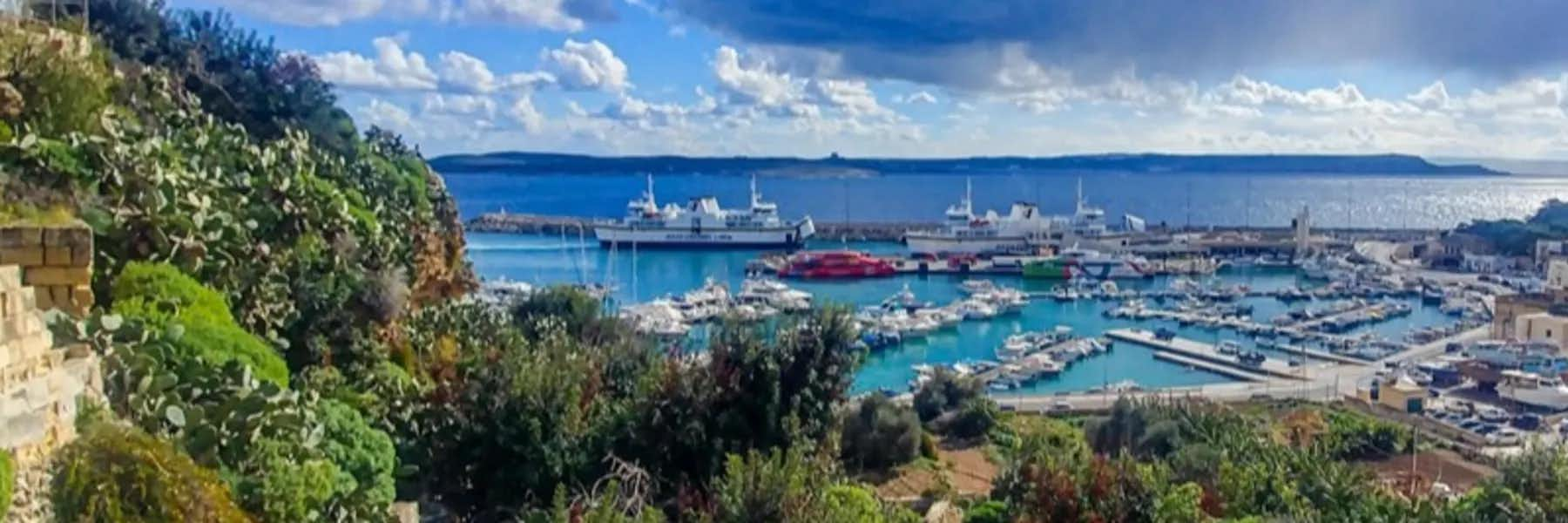We sat on our terrace overlooking the Gozo Channel, the islands of Malta and Camino, and the green terraced farms below. Clink! “Happy Gozo try-out year.”, I said; Kevin repeated the toast.
January 11, 2024, marked one year since we officially moved to the village of Nadur, on Malta’s little sister island, Gozo. We arrived that day with two suitcases each and our backpacks. Clothing, laptops, and cameras were all we brought to our new life in an old world.
In mid-2022, we decided to give Gozo a one-year try-out before making severe life-changing decisions regarding our California home. In January 2023, we made the plunge.
How to Move Out of the U.S.
How to Move Out of the U.S.
In all sorts of beautiful, welcoming, culturally rich, saner places around the world, you can live well from $2,000 a month (all in, housing included). Sign up for our free daily IL Postcards e-letter and we’ll immediately send you a free report on the WORLD’S # 1 RETIREMENT HAVEN— plus 9 more spots you should have on your radar. Each day, you’ll earn about the best places to move to, retire, travel, buy real estate, and enjoy a good life for less, overseas.

By submitting your email address, you will receive a free subscription to IL Postcards and special offers from International Living and our affiliates. You can unsubscribe at any time, and we encourage you to read more about our Privacy Policy.
Why Gozo?
We chose Gozo, Malta, because of the 300 days of sunshine each year, the location in the center of the Mediterranean, the outstanding food, the welcoming people, and, best of all, the cost of living — we live the retirement life we dreamed of with just our Social Security.
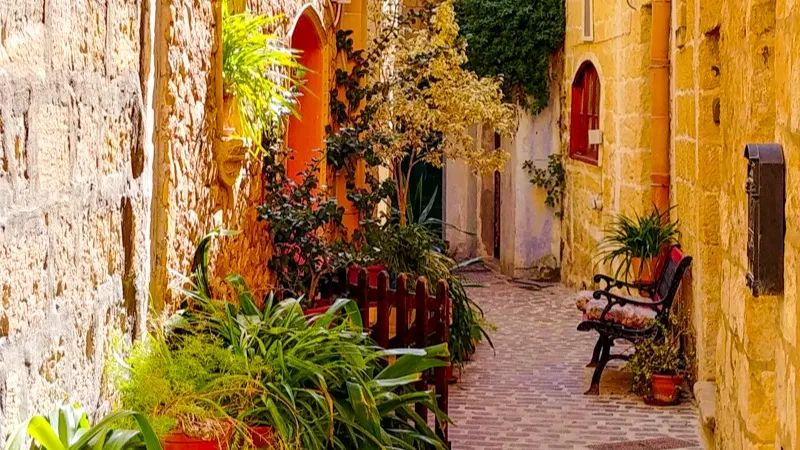
Where to Live
After we decided to move to Malta, we had to determine precisely where in the archipelago we wanted to live. First, we selected the island of Gozo for its smaller population, less modern development, and rural lifestyle. After visiting the villages, we picked Nadur. It is on a hill high above farmland and the harbor and has a lovely prevailing sea breeze.
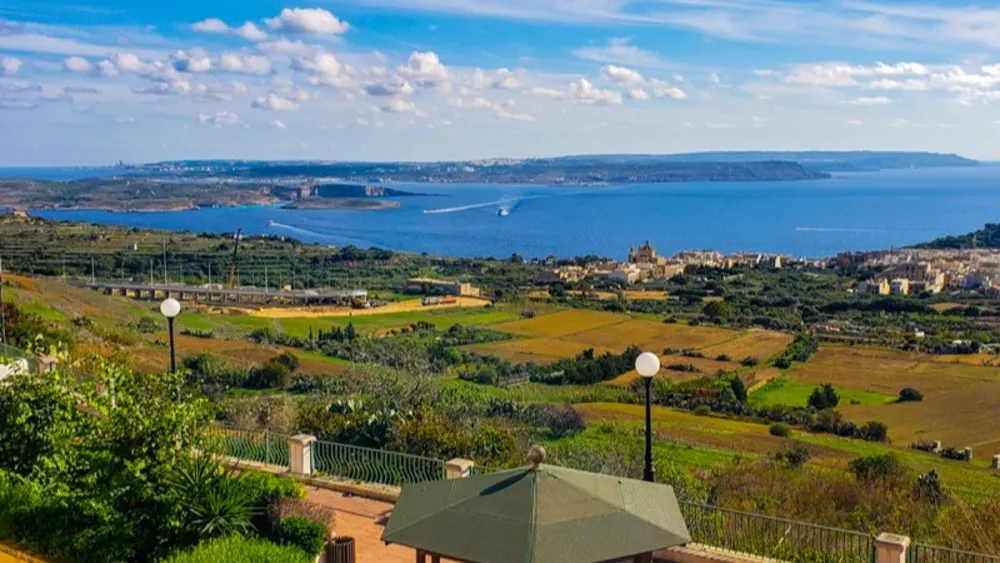
With the help of a real estate agent, we found a flat within our budget that matched our list of must-haves and must-not-haves. Our 2000-square-foot apartment overlooks farmland, the islands of Camino and Malta, the ferry harbor, and the impossibly blue Mediterranean. The agent interfaced with our landlord and ensured the lease was correct and registered with the Gozo Housing Authority — a requirement when applying for residency.
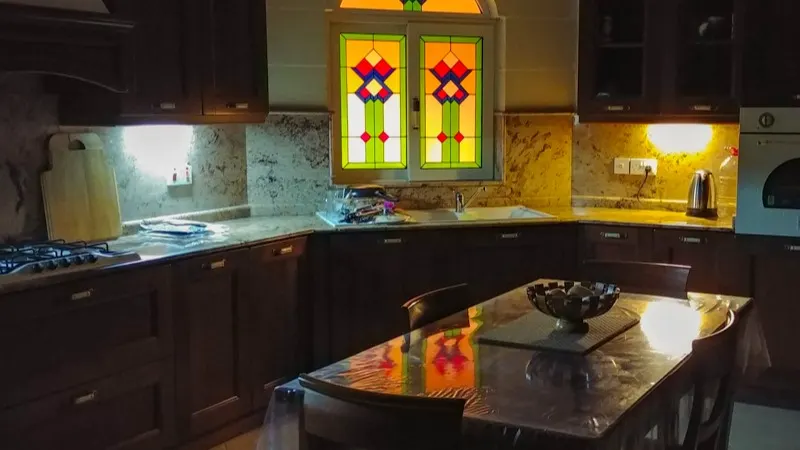
What We Found For $760
We knew we had found our new home when we stepped onto the terrace. Our fully furnished apartment has custom wood furniture, solid wood cabinetry, marble and tile floors, and counters. Three bedrooms and two baths provide plenty of space for us and our guests. Our large modern kitchen has ample space to cook and learn about our new Mediterranean diet. Our terrace is the perfect space to gaze at the changing scenery throughout the day. It’s also a lovely place to entertain.
Our rent for this luxurious flat is €700 (about $760). All our utilities—electricity, gas, water, garbage, internet, Wi-Fi, streaming TV, two cell phones, and one house phone—average €200 per month (About $217). Our rent budget was €800. For utilities, we budgeted €300. We are thrilled with the savings and add them to the ‘travel fund’ each month.
Getting to Know the Merchants
“Good morning, Mary. What can I get for you today?” Johnny asked as he stocked the deli case with fresh goat cheese, aged cheeselets, and luscious feta. We quickly began to favor Azzopardi’s Market as our food shop and adopted the ‘shop for food daily’ way of life. Johnny, at the deli, has become a good friend. He even took us to his farm one day. He worked weeding the rows of potatoes and beans in his bare feet. It is a Gozo farmer tradition to connect to the earth while working. The rest of the family has accepted us and made us feel welcome on our daily visits to buy the day’s food needs.
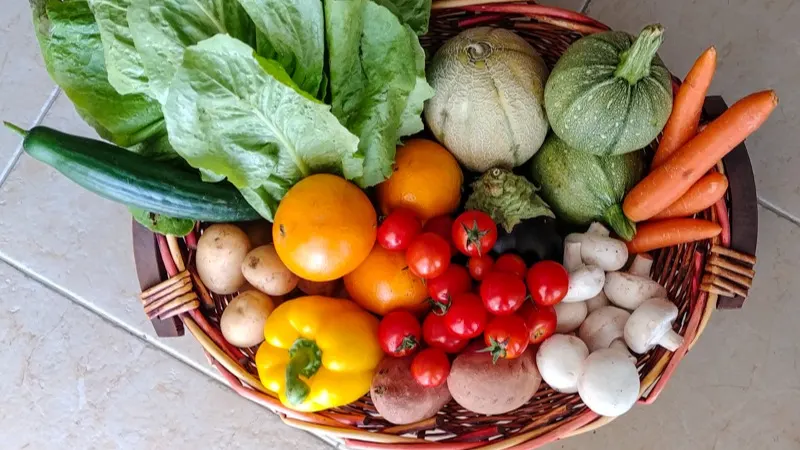
We discovered the Wednesday Street Market in the village square during our first week in Nadur. Much of our shopping, especially produce, is done at this combination of a shopping and social event. We love the ‘just picked this morning’ produce directly from Gozo farmers. Prices like 50¢ for a large head of cauliflower, 50¢ for a pound of fabulous Maltese potatoes or tomatoes, 50¢ for four ounces of local goat cheese, plus the local olives, oranges, lemons, pomegranates, persimmons, plums, grapes, greens, squash, and much more are fresh that day and the highest quality we’ve ever enjoyed.
It didn’t take long before we discovered our village had three food shops and three butchers. In addition, there are two pharmacies, a household goods store, a clothing shop, a hardware store, and three general stores selling various merchandise. Each is small and family-owned.
A Marvelous New Diet
“These tomatoes must have been old.” “Why did these peaches get moldy so fast?” In our first couple of weeks, we asked these questions frequently as we noticed fresh fruit and veg seemed to spoil quickly. We finally figured out it was because of two reasons.
One — Produce is not picked until it is ripe, unlike much of what is in US markets. Two — Produce is never sprayed or treated with preservatives or other chemicals designed to prevent ripening while making the journey to market. Therefore, the shelf-life of just-picked Maltese produce is shorter but natural. We learned that shopping daily for only as much as we would eat in two days ensured we were always eating food at its height of freshness and flavor. We find it very satisfying and tend to eat less of the rich, nutritious produce.
We buy our animal protein either from the butcher or fishmonger. The fish is caught that day and is budget-friendly. We include fish or shellfish in our meals frequently. Chicken or pork comes from the butcher. While we eat beef, it is imported and pricey in Gozo and a special treat. When we want a good old American-style hamburger, we go to the butcher shop, and Lino grinds some lean beef with a bit of fat. It is delicious. Like fruit and vegetables, meat-producing animals are not fed hormones, antibiotics, or anything else but natural animal feed.
You may have heard it said that Maltese bread is the best in Europe. It is true. The simply made sourdough bread is addictive. Using only flour, salt, yeast, and water produces nutritious bread essential to the daily diet.
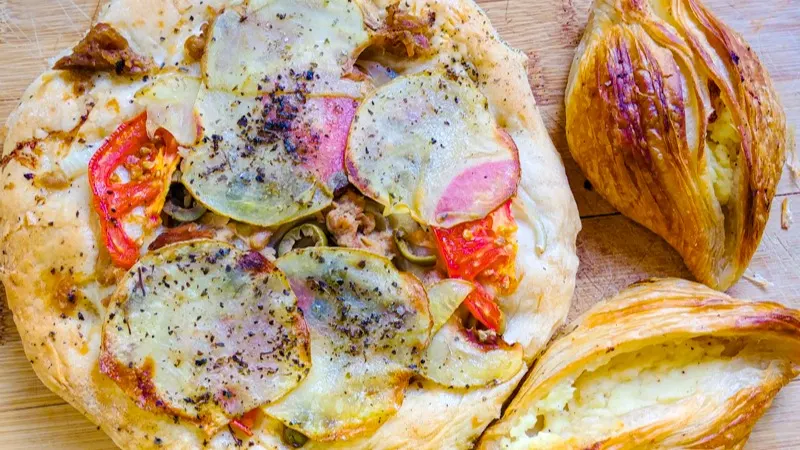
Each village has at least one bakery where bread, pastries, cakes, and cookies can be bought daily. Some bakeries have a truck that wanders through the streets, sounding their unique horn to let you know they will be stopping. It is a great way to get baked goods and chat with neighbors.
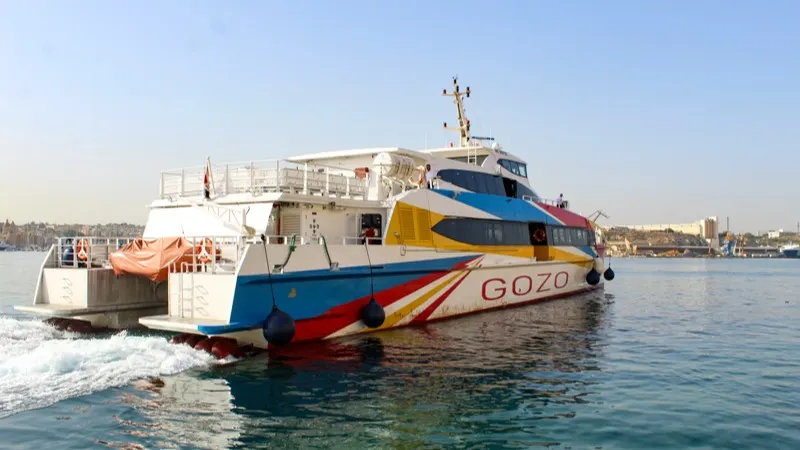
Learning to Get Around
Walk—Terraced farms outlined by stone and rubble walls, fragrant orchards, barefoot farmers, and the occasional hiker or bicyclist were our companions while walking from our new home to Dahlet Qorrot, a small fishing harbor and beach. Right away, we learned that walking was often the best way to get to most places.
We walk everywhere within our village and seek trails to new places to explore and photograph. The island of Gozo is tiny—4.5 x 9 miles. Encircled and crisscrossed with trails and walking paths, you can take the scenic route to any place on the island.
No Car—After our first visit to Gozo, we decided not to have a car. Between the narrow winding streets and the left-hand drive, we knew we would not be very good drivers. In addition, we wanted to eliminate the 10 grand a year cars were costing us. The cost of owning an auto went straight into our cash flow. What a bonus!
Bus—When walking isn’t a good option, we take Malta Public Transport. City buses are modern, frequent, clean, safe, and, best of all — FREE!
Taxi—When a bus won’t do, taxis are inexpensive and available everywhere using a Smartphone App. Bus Stops are friendly, almost social places. Mary made her first friend at a bus stop.
Ferries—The only way to get to Malta is to take one of two public ferries. Gozo Fast is $3 each way, and Gozo Channel Ferry is $2.25 each way.
Let's Fly—The international airport is on the Isle of Malta, serving over 50 EU and UK cities with direct flights. Fast and easy travel throughout Europe has been fantastic and very budget-friendly. For example, roundtrips to Paris are $113, Madrid $63, Lisbon $85, Rome $35, Milan $48, and many more bargains.

Social Life
That first morning at the bus stop was filled with anxiety. “Was this the right stop for Victoria? Had I missed it, was it late? On and on, the questions rambled through my head. Then I heard a happy voice, “Are you going to Victoria?” The lovely and cheerful Rose assured me I was at the right stop. Rose was my first bus stop friend.
Friends are easy to make in Gozo. Folks are welcoming no matter their nationality or yours. Many are from America, Canada, England, and Australia. Some are ex-pats, and some are dual-country citizens. We have made friends in our village square, at festas and concerts, on social media, and in community groups. We’ve met new friends in eateries, parks, and shops. Malta is a friendly nation. The Maltese are interested in others and love telling their own stories.
How to Move Out of the U.S.
How to Move Out of the U.S.
In all sorts of beautiful, welcoming, culturally rich, saner places around the world, you can live well from $2,000 a month (all in, housing included). Sign up for our free daily IL Postcards e-letter and we’ll immediately send you a free report on the WORLD’S # 1 RETIREMENT HAVEN— plus 9 more spots you should have on your radar. Each day, you’ll earn about the best places to move to, retire, travel, buy real estate, and enjoy a good life for less, overseas.

By submitting your email address, you will receive a free subscription to IL Postcards and special offers from International Living and our affiliates. You can unsubscribe at any time, and we encourage you to read more about our Privacy Policy.
Residency and Overstaying Our Welcome
If we failed anywhere in our relocation to Gozo, it was with our residency applications. We have one big piece of advice — know the current requirements before applying. Unfortunately, we were working with requirements that had changed.
Our residency cards were delayed for months before the correct paperwork was filed. Eventually, we were on the right paper path and received our Digital Nomad Residency Cards.
While it is embarrassing to admit, one thing we did not know about was the Schengen Zone and the time limits for staying within the zone (90 days within the last 180 days). Because Mary had overstayed the 90-day limit before her residency application was approved, her application was delayed, and she had to leave the Schengen Zone for eight weeks while her application was fully processed. In addition, Mary was fined €600 for her overstay.
All is well now; we have our Digital Nomad Residency. We advise anyone moving to Malta or Gozo to get a long-term visa at a Malta Embassy before leaving the US (or another country). That can give you up to a year to apply for and receive your chosen residency type. Study them all before deciding which is suitable for you. Learn more at the Expatriates Unit of Identità Malta.
Healthcare
As fate would have it, Kevin needed to see a physician before we had secured healthcare insurance. It was a simple matter that did not require extensive care. Our local pharmacist recommended a doctor with a walk-in clinic. Dr. Teddy saw Kevin and wrote a prescription for his condition. The cost was €20, and the prescription, which was €3.50, resolved the problem.
As part of our Digital Nomad residency application*, we were required to have health care insurance. We found a company that offered the type of policy we needed at almost $1000 less annually than our Medicare. In addition, it pays 100% of the already low costs of most medical care and prescriptions. We will cancel our Medicare coverage (it can be reinstated if needed).
Malta is ranked #5 for overall quality and availability of healthcare by the World Health Organization. Medical tourism is common for joint replacements and cosmetic surgeries.
*Note: Some residency types include free access to the National Healthcare System.
Learning the Language
Malta is a dual-language country with Maltese and English as the official languages. Because the British governed Malta for 160 years, English is deeply engrained into the culture. In fact, all government business is conducted in English. That was a significant relief when applying for residency.
We are learning some Maltese, but it is a complicated language comprising Arabic, Italian, English, and some French. Little by little, we are learning Maltese words and should be putting together sentences one of these days.
Most signs are in English. For those in Maltese that we don’t understand, we use Google Translator. It has helped us learn more common words and phrases.
A Typical Day in Gozo
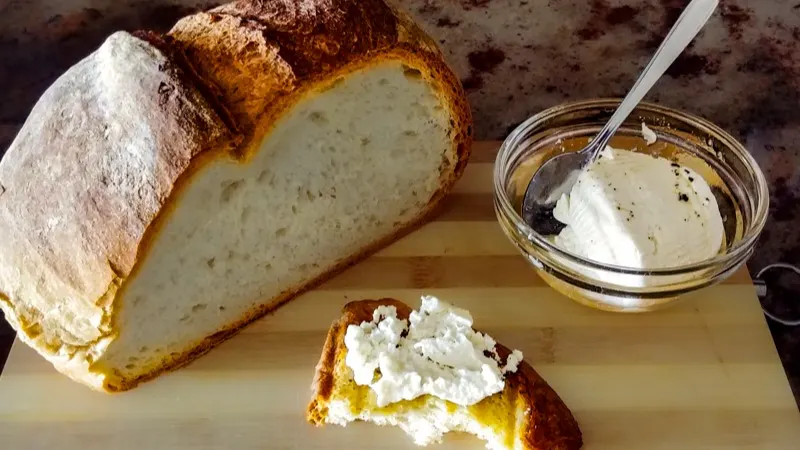
Morning — Our days in Gozo usually begin with tea and breakfast on the terrace. We watch the harbor’s bustling boat traffic cross the two-mile channel to and from Malta. Below us, farmers are working their fields. Crops are grown most of the year, giving us a beautiful vista of green.
Afterward, we take a brisk 30-minute walk to Kanuna Tower and Botanical Gardens atop a nearby hill. Some days, our walk turns into a photo session of the surrounding landscape and the blue Mediterranean. We always take a camera along.
Returning from our walk, an hour or two is devoted to writing travel stories, reviewing hotels and eateries, editing photos and videos, or planning our next adventure.
Lunch —Our biggest meal of the day is lunch. We eat a plant-based diet three to four days a week. We typically eat lunch at home but occasionally treat ourselves to lunch in a nearby village at a restaurant we want to scout.

Afternoon — We head out to explore our island. We might walk a new path or investigate a church or chapel — there are 359 churches on the islands. We visit ancient temples, windmills, old watch towers, beaches, swimming holes, museums, art and craft fairs, festivals, concerts, and more.
Some days, we take the ferry to Malta and roam the incredible city of Valletta or the Three Cities across the Grand Harbor. The entire city of Valletta is a UNESCO World Heritage Center with numerous museums and over 320 monuments in 0.24 square miles, making it one of the most historically concentrated places in the world.
We found a tiny little café in Valletta where we always stop for an afternoon break. We order a glass of prosecco, and it is served with a little plate of snacks, like cheese, pickled broad beans, crackers, finger sandwiches, chips, or other delights. The price for our wine and complimentary snacks is €8. Occasionally, we spend a night or two scouting hotels, restaurants, and entertainment for a travel story.
On weekend afternoons, something always happens in our village square or one of Gozo’s 18 villages. It might be a car show, art fair, or celebration of food like the olive or honey festival. Each village has a festa honoring its patron saint. They last several days and include traditional music and food.
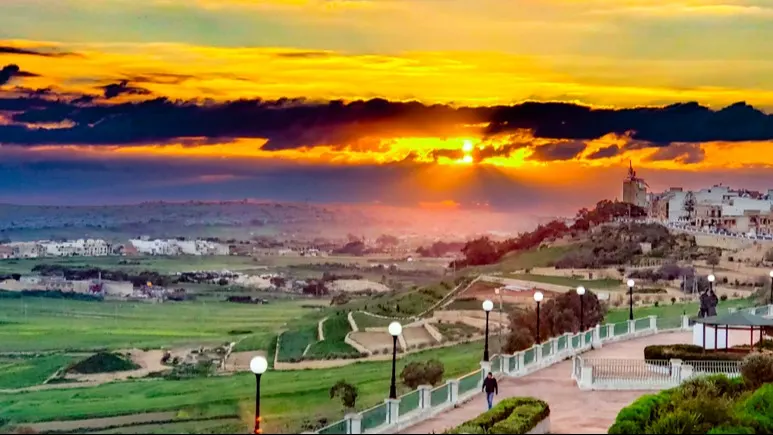
Evening — Often in Nadur, we join friends in the village square in the late afternoon or early evening for a coffee, wine, or snack of pastizzi or small ham sandwiches. We have made local friends and have met folks from around the globe. Why Americans would leave California to live on the tiny island of Gozo is a common topic of conversation.
Some evenings we stay in the square to enjoy a free concert. It might be traditional, Rock, or the philharmonic. Sometimes, we board a bus, enjoy a light dinner in Victoria, and then attend an event in Villa Rundle Gardens or an opening at a gallery.
Our Future
Our new life in an old world is much more than we dreamed of for our retirement years. The relaxed pace of life on Gozo, the engaging people, the healthy diet, the sunny weather, the strategic location, and the cost of living make it our everlasting home. We will return to the US to visit family, but not to live.
We have already begun to explore Eastern Europe, and the rest of the world is on our list as we live the dream retirement life — travel.
How to Move Out of the U.S.
How to Move Out of the U.S.
In all sorts of beautiful, welcoming, culturally rich, saner places around the world, you can live well from $2,000 a month (all in, housing included). Sign up for our free daily IL Postcards e-letter and we’ll immediately send you a free report on the WORLD’S # 1 RETIREMENT HAVEN— plus 9 more spots you should have on your radar. Each day, you’ll earn about the best places to move to, retire, travel, buy real estate, and enjoy a good life for less, overseas.

By submitting your email address, you will receive a free subscription to IL Postcards and special offers from International Living and our affiliates. You can unsubscribe at any time, and we encourage you to read more about our Privacy Policy.
